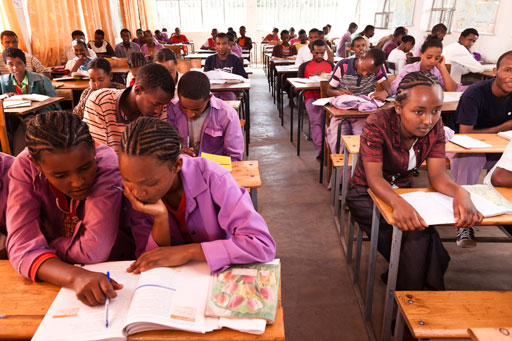9.2 Channels for communication
Communication can take place through a wide variety of means or channels including interpersonal, group, community, and mass and social media communication channels. If you are planning behaviour change communication or social change communication you should assess all possible ways and means to get your message across. For example, consider what might be the most appropriate channels to promote handwashing with soap in primary schools in your woreda. You will need to consider:
- Are there WASH clubs in the schools?
- Would posters be effective?
- Do the schools have radios?
- Do the schools have television sets?
- Do the schools have computers? With or without internet access?
- Which of these communication channels do students prefer?
- Which channel do they trust?
Some methods of transmitting information to children are illustrated in Figures 9.1 and 9.2.


It is critical to select the channels that will be most appropriate for reaching the school children frequently and effectively. You should take the following points into consideration.
- Different channels play different roles. Using several channels at the same time increases the impact of communication messages. For example, you can use school clubs to promote handwashing with soap but, with the cooperation of teachers, you can also use peer education sessions where children learn with and from each other, as shown in Figure 9.3, or recorded audio messages to reinforce the message.
- Select channels that are accessible and appropriate. For example, printed written materials should be distributed only to literate participants but materials based on pictures can be used to communicate with almost anyone.
- The effectiveness of a channel can be measured by its ability to get people to understand and remember information, to be motivated to tell other people about this information, and to change their behaviour based on the information. A channel could also be considered effective if it provides timely information, creates an appropriate climate for change, efficiently reaches targeted groups of people, and is cost-effective.

Your behaviour change strategy will depend on effective communication with your target group. The following sections of this study session look at the main approaches to communicating about changing WASH behaviour. These approaches are (UNICEF, 2005):
- behaviour change communication, which is about influencing individuals
- social change communication and social mobilisation, which are about influencing communities and other groups
- advocacy, which is about influencing decision makers at all levels.
9.1 Developing a behaviour change strategy
